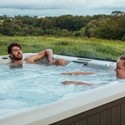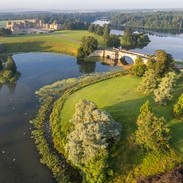Body text
Legionnaires’ disease is a potentially fatal form of pneumonia caused by Legionella bacteria. While these bacteria are common in natural water systems, they usually occur in numbers too small to cause health problems. However, in particular conditions, these bacteria can multiply quickly and cause a significant health risk.
These conditions are where water is maintained between 20 and 45°C, is stored or recirculated, where there is a source of nutrients in the water (including rust or scale) and where there are aerial water droplets. This means that water tanks, spas or hot tubs, air conditioning units and showers are the most common places for the bacteria to breed.
Legionella is classified as a ‘hazardous substance’ and, therefore, you are required to undertake a risk assessment, and any subsequent remedial actions, in order to protect both your staff and customers.
If you have five or more employees, you must record what assessment and actions you undertake. While it is not a legal requirement to record the assessment and actions if you have fewer than five employees, it is always recommended that you do so in case you are challenged at a later date.
If you have a self-catering or bed and breakfast property with a normal residential water system, this risk assessment will be straightforward as the risk of Legionnaires’ disease should not be high. A full specialist assessment is generally only needed if you have a large commercial property or if you are uncertain of the property’s water system.
The main things to check for are:
- Ensure that no debris is entering the system (for example, ensure that any water tanks have a tight-fitting lid);
- Ensure that the hot water cylinder is set to at least 60°C;
- Ensure that there is no redundant pipework in which water could become stagnant;
- Ensure that showerheads are regularly cleaned and disinfected.
If you have machinery that contains water, such as air conditioning units or a spa/hot tub, then special attention needs to be paid to ensure that this is regularly serviced and cleaned.
If you operate a property where the water system is not in regular use (for example, a self-catering property that has long void periods or closes over winter) then additional precautions need to be undertaken to ensure that the water in the system does not stagnate. If your property is going to be vacant for a significant period, you should either drain or flush the system before the guests arrive.
Further information on Legionella and how to control it in water systems is available on the Health and Safety Executive website.








